My first experience with Dalgona coffee was wholly ‘organic.’ I’m almost embarrassed to admit that I was entirely unaware of this latest coffee craze until my daughter rummaged through our pantry to dig up a few packets of instant coffee, and then started whisking. And whisking. And whisking some more.
Once the whisking was done, she then gleefully poured what appeared to be a vaguely coffee colored mousse over chilled milk in one of our pink-hued rollerball glasses, and presented me with “Korean Coffee.” Unsure of precisely what I was looking at, and being a bit skeptical of whipped instant coffee, I politely suggested “You first.”
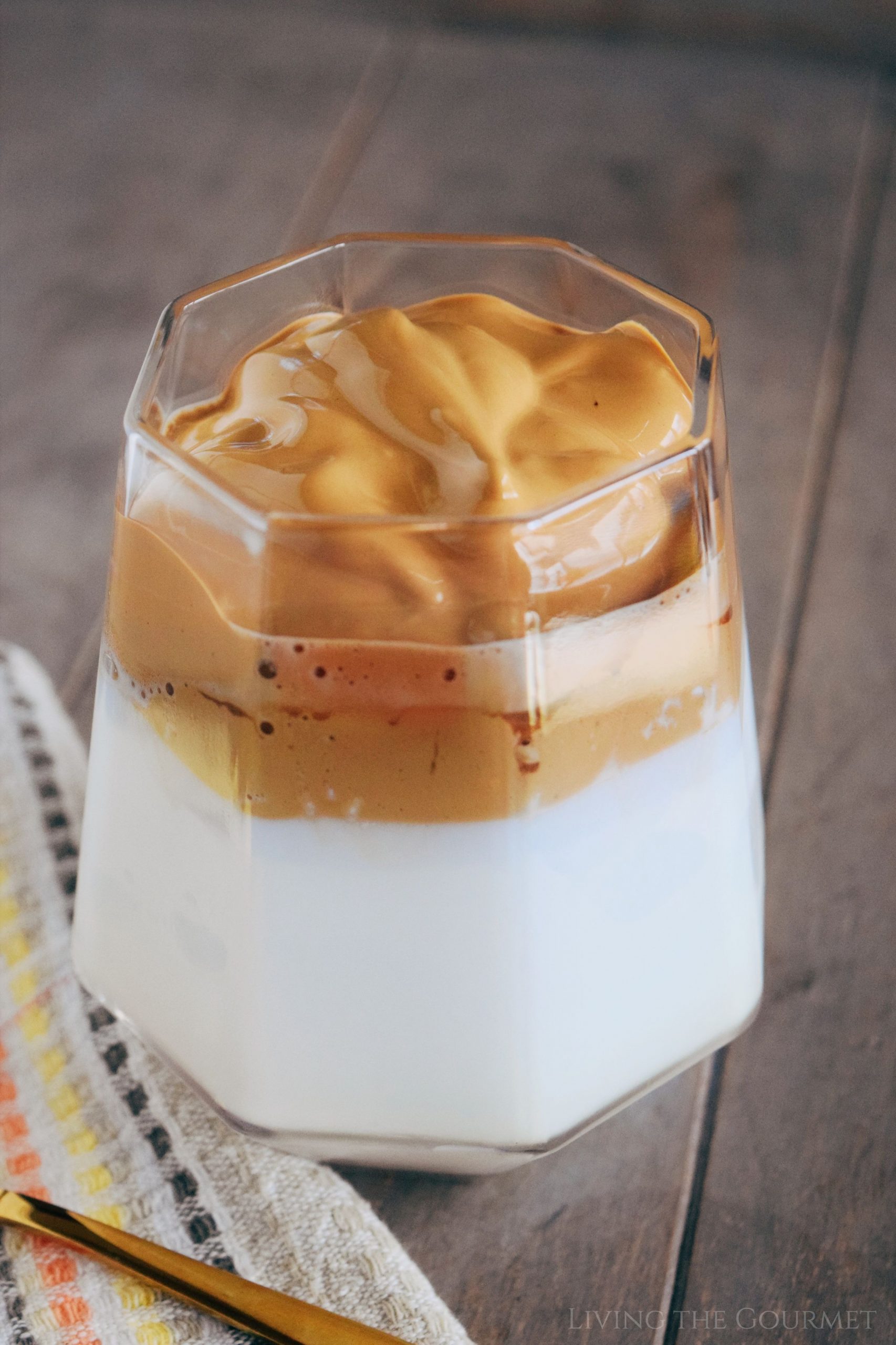
Naturally, and perhaps expectedly, my son dived right in. After his first…bite? It was the happiest I’ve seen him in a long time. “So, how does it compare to your Turkish coffee?” my daughter teased him.
He hesitated for a long moment, very obviously caught between his heritage-based affinity to Hellenic/Turkish-style coffee and his current coffee-based euphoria. However, his answer was far more honest than he had intended. “Greek Coffee is a cultural experience for me, but this…honestly this is just making me happy. This is a lot of fun.”
And that was my first experience with Dalgona Coffee, and as you might imagine it was a very pleasant one.
Dalgona Coffee – What is it?
The origin of Dalgona Coffee is a bit fuzzy, but how it got its name is an absolute viral sensation. The Korean actor Jung Il Woo, upon tasting this particular type of coffee in Macao, compared its flavor to ‘Dalgona,’ a popular Korean candy similar in flavor and texture to honeycomb – think honey toffee but spongier. Naturally, this A-List attention instantly made the coffee a national phenomenon in South Korea, and just like that ‘Dalgona’ went from being a candy to a coffee.
Fast forward through a wildly viral Tik-Tok clip, accompanied by several similarly viral Youtube videos, followed by a tidal wave of attention from the foodiesphere, and ‘Dalgona Coffee’ grew from being a regional phenomenon to a global one. This sweet, foamy, frothy coffee is positively everywhere right now.
But ‘what’ is it ‘really?’ Whipped coffee syrup over milk.
I’m not getting away with an answer that simple, am I?
Alright, let’s do a deep dive – but you better buckle up because there’s going to be some minor culinary chemistry involved here. There’s just no escaping it.
Dalgona Coffee – How It Works
To begin, we need to start with what really captures people’s attention about this coffee, and that is undeniably the ‘foam.’ This sweet coffee foam is blissfully light, delicately moist, bitingly sweet, and shockingly persistent and lasting. Unlike espresso foam, which evaporates in minutes, dalgona foam will simply sit there seemingly until the end of days, and it’s persistent – meaning it resists being ‘stirred away.’
This foam is simply instant coffee, sugar, hot water, and ‘air’ – lots and lots of ‘air.’
But ‘why?’ What makes Dalgona coffee foam ‘work?’ To answer that, you need to first think about the starting point of the coffee, which begins with a one-to-one mixture of sugar and hot water – meaning the starting point is a small dose of ‘syrup.’ However, in that heated syrup we have coffee – which acts as a frothing agent.
When you roast or heat coffee you create a host of compounds called ‘melanoidins,’ which you can think of as ‘coffee oils.’ These oils are what create the ‘crema’ that makes espresso look so lovely, and are what give Turkish coffee its enviable natural ‘froth.’ As such, these oils are a type of natural ‘surfactant,’ or ‘surface acting agent.’ In culinary terms, a ‘surface acting agent’ is something that, among other functions, interacts with or ‘sticks’ to bubbles, thereby making the bubbles sturdy and lasting.
Now, if you’ve ever made or had an espresso, you can probably surmise that coffee oils are not the strongest of surfactants. In fact, espresso crema more or less evaporates immediately…but the froth of Turkish coffee does ‘not,’ and the difference between the two is actually what gives Dalgona coffee it’s magic.
Espresso crema evaporates quickly because it’s only interacting with water, as espresso is simply heated water pressed through compacted coffee at high pressures. In the case of Turkish coffee, you typically have coffee that’s been roasted in a relatively small amount water - but with a comparatively large amount of sugar which dissolves directly into the water, thickening the coffee. For this reason, the ‘froth’ of Turkish coffee can persist for literally hours.
Now, in the case of the delgona coffee, we have a one-to-one water-sugar mixture (the starting point of a syrup), and thus we’re extracting the coffee oils into a very ‘viscous’ liquid. This creates a sturdier base for surfactants to interact with, and therefore a sturdier and more long-lasting froth.
This brings us to the final ingredient in dalgona coffee - air, lots of air. How so? ‘Foam’ is really just conjoined ‘bubbles,’ and the smaller bubbles are the sturdier or more ‘stable’ they are. By whipping dalgona coffee so intensely, you are introducing more and more air into the mixture, thereby making the bubbles smaller and smaller - and therefore sturdier.
To summarize, why does Dalgona coffee ‘work?’ The answer is because you are introducing a ‘foaming agent’ (concentrated instant coffee) into a viscous liquid (syrup), and then rapidly introducing a lot of air into that mixture.
And that’s dalgona coffee in about as much depth as is possible.
Frequently Asked Dalgona Coffee Questions
1) Do I need to mix it by hand? Certainly not. A stand mixer with a whisk attachment will work just fine, as will a hand-mixer.
2) Can I use real coffee? Non-Instant Coffee? No. Instant coffee is the ‘go-to’ coffee for this recipe for a couple of reasons. First and foremost, instant coffee dissolves, whereas ‘real’ coffee would remain as ‘granules’ or ‘grinds’ in the resulting froth. Secondly, instant coffee is essentially ‘coffee concentrate,’ and thus you have a larger amount of ‘coffee’ in a smaller amount of ‘mass,’ which is part of what makes this recipe work.
3) Brewed Coffee? You might be wondering what would happen if you tried to use something like a shot of espresso to make this coffee, and no that doesn’t work either. Brewed coffee is simply too dilute for this work. Yes, if you added quite a bit of sugar to an espresso and began whipping, you would eventually get a ‘froth,’ but it wouldn’t be a very stable froth, and the ‘coffee flavor’ would be far too stretched.
4) Only Over Milk? Experiment to your heart’s content, I say. However, the milk, or milk substitute if you prefer, is there more or less to provide a counter to the bitterness of the instant coffee. It also adds a ‘milkshake-like’ texture at the base. Also, using a cold drink as the base for the dalgona froth prevents the froth from evaporating due to heat. Could you place this dalgona coffee froth over something else? Sure, but putting this over hot or cold coffee would simply be overkill in my opinion, which brings me to my final point…
5) It’s REALLY Strong Coffee. I’m using FOUR packets of my favorite instant coffee to fulfill the virally recommended ‘two tablespoons of instant coffee per serving’ recipe. In other words, one Dalgona Coffee is approximately four cups of ‘regular’ instant coffee. That’s a lot of coffee. I just want you to be cognizant of that when preparing this.
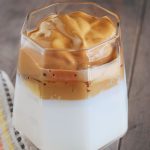
Dalgona Coffee (Whipped Coffee Drink)
- Total Time: 5 minutes
- Yield: 1 coffee 1x
Ingredients
- 2 tablespoons instant coffee
- 2 tablespoons sugar
- 2 tablespoons hot water
- 1 cup milk
Instructions
- In a small bowl, whisk together instant coffee, sugar, and hot water until thick and creamy, about 5 minutes.
- Top over a glass of milk and stir to incorporate. Serve and enjoy!
- Prep Time: 5 minutes
Nutrition
- Serving Size: 1
If You Enjoyed Today’s Recipe…
Be sure to follow us on Instagram to stay up to date with all things Living the Gourmet, and for more great recipes, tips and tricks.
Did you make this recipe?
If so, let me know in the comments down below, or post a picture to Instagram, or to Pinterest, and I’ll give you a shoutout on Instagram, or post your pin to one of my Pinterest boards!
13
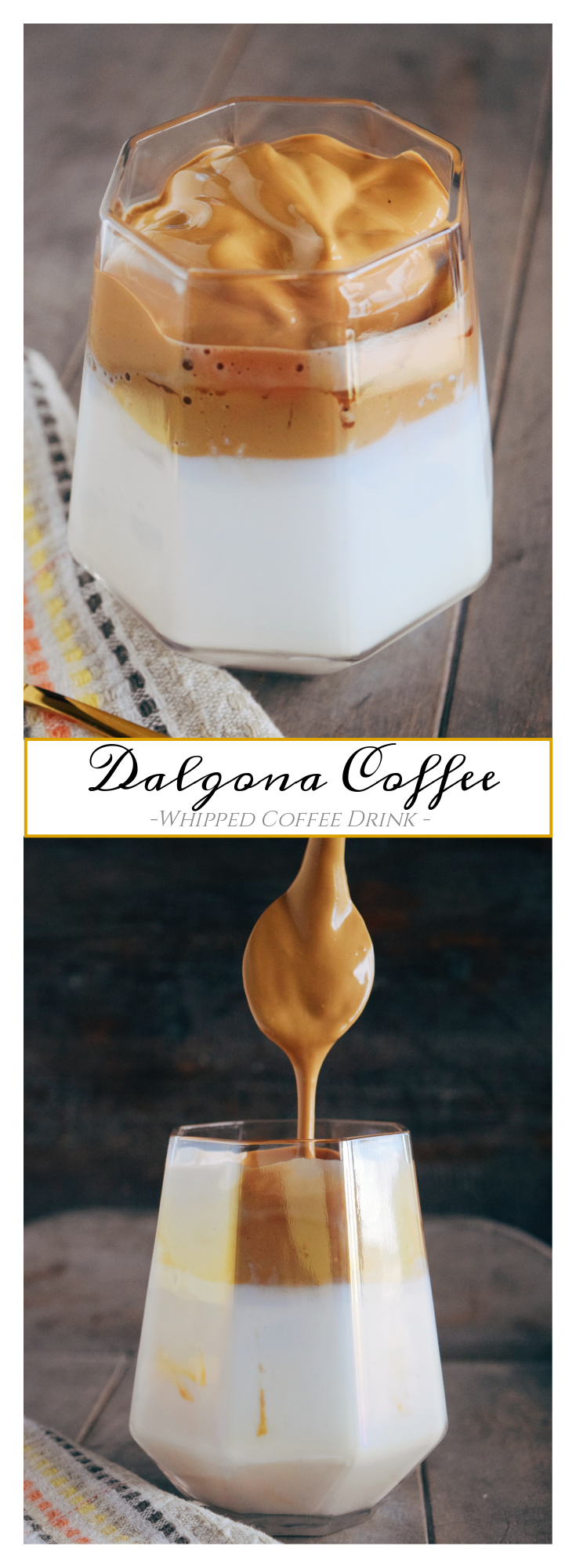
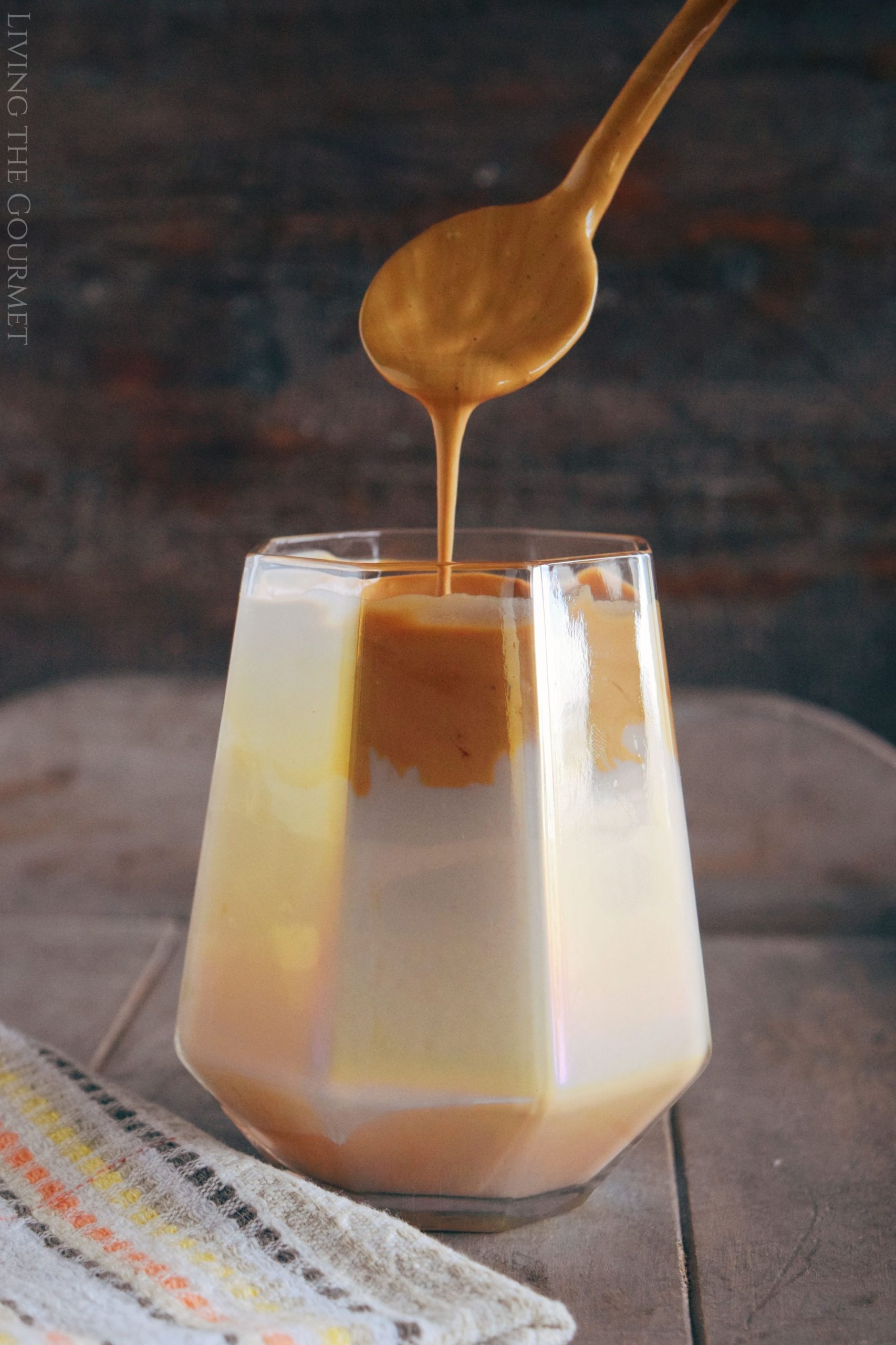
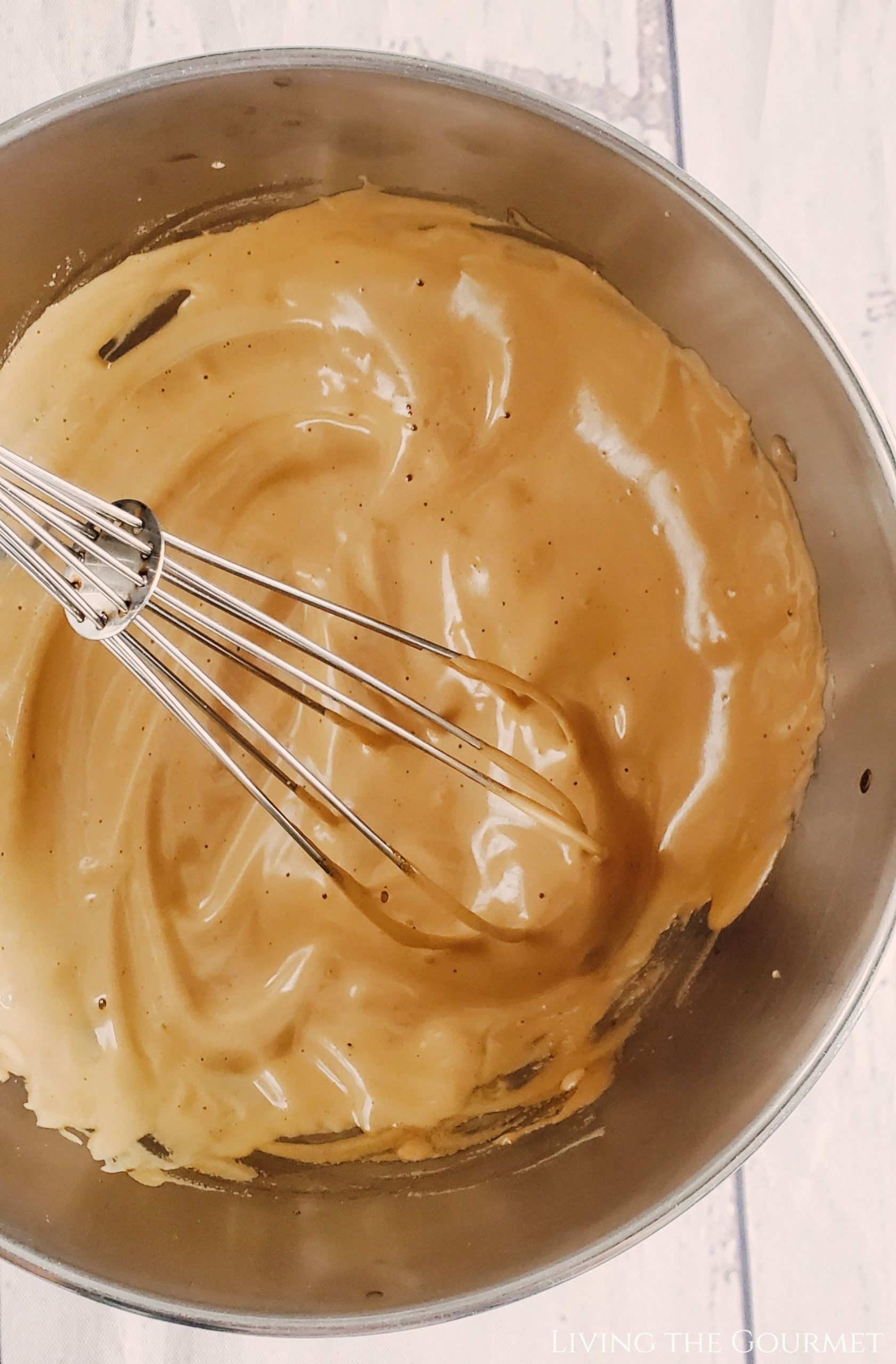
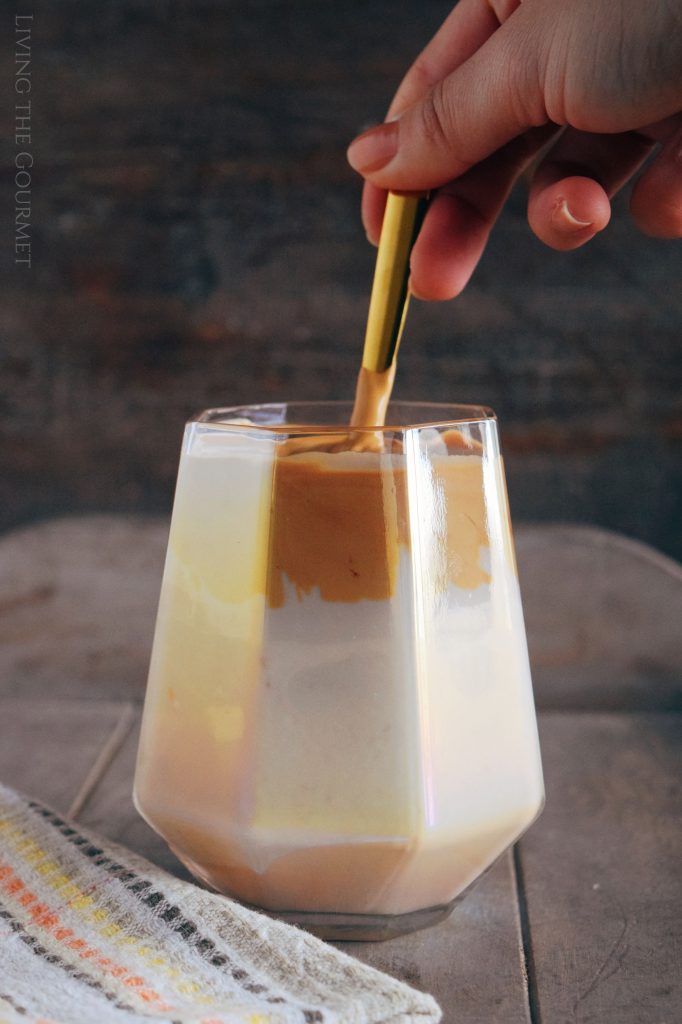
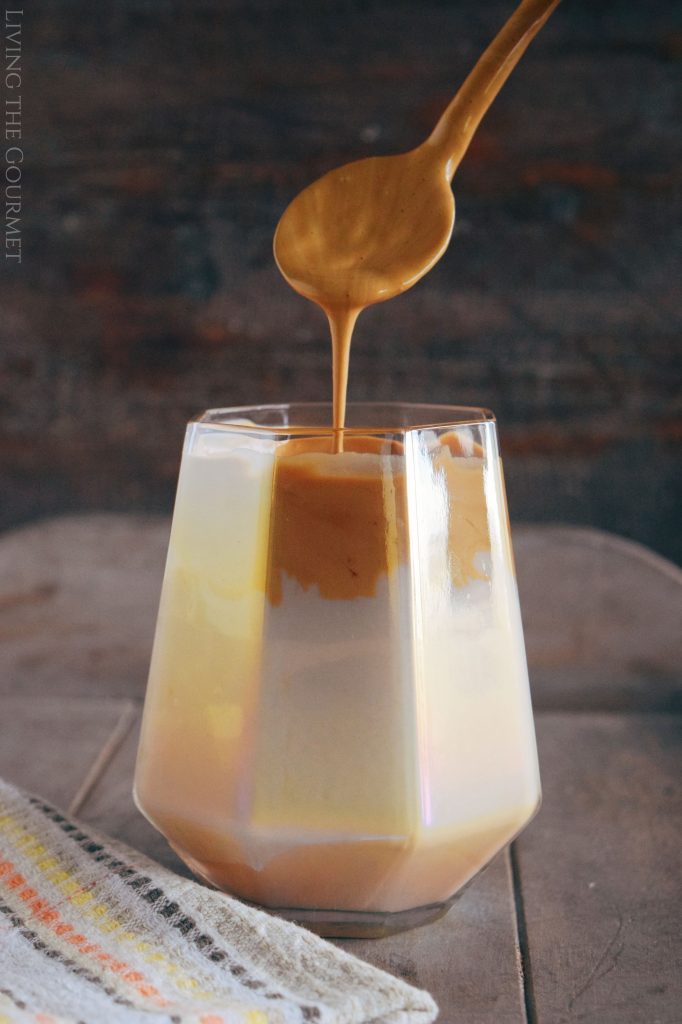
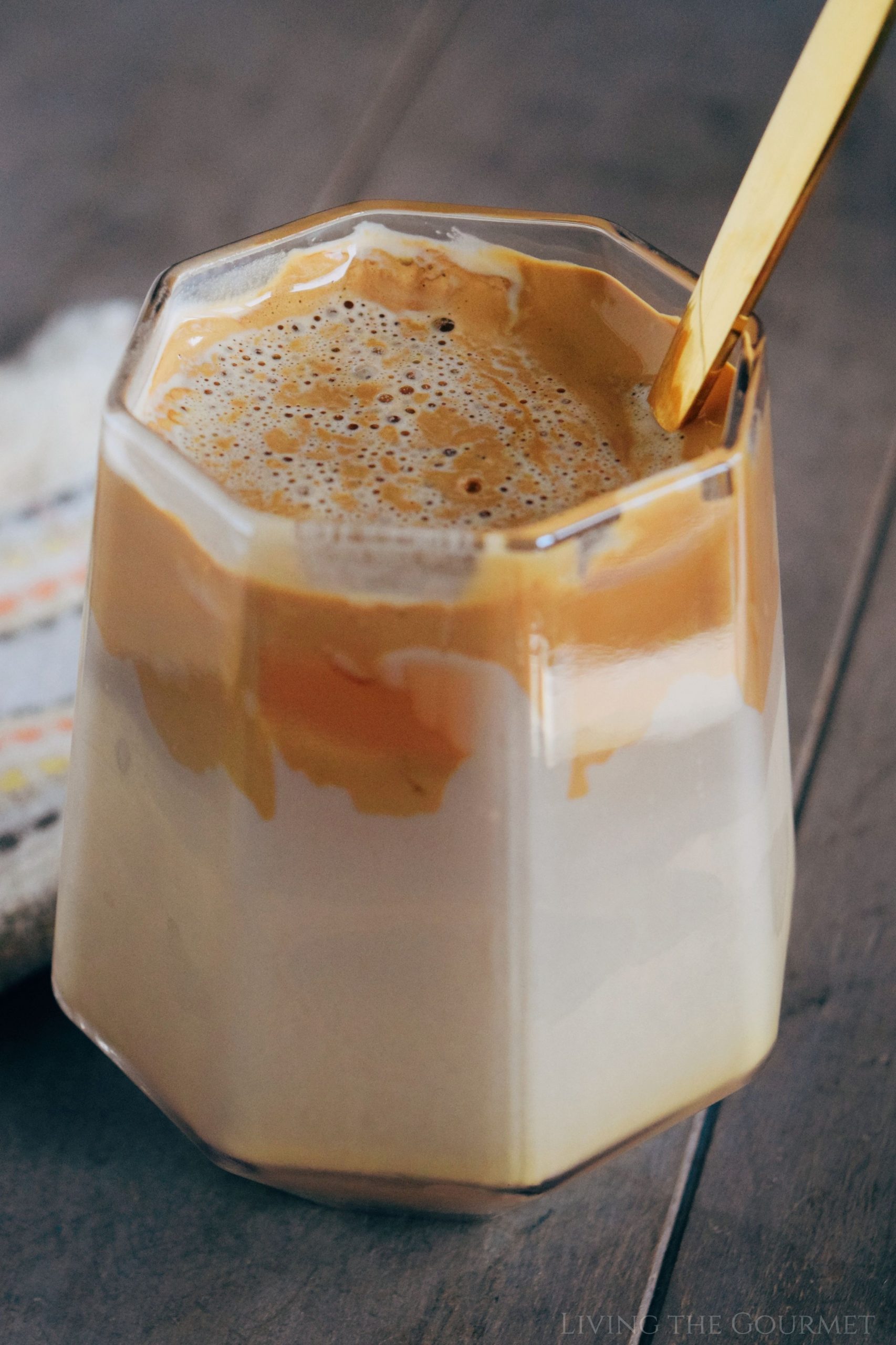
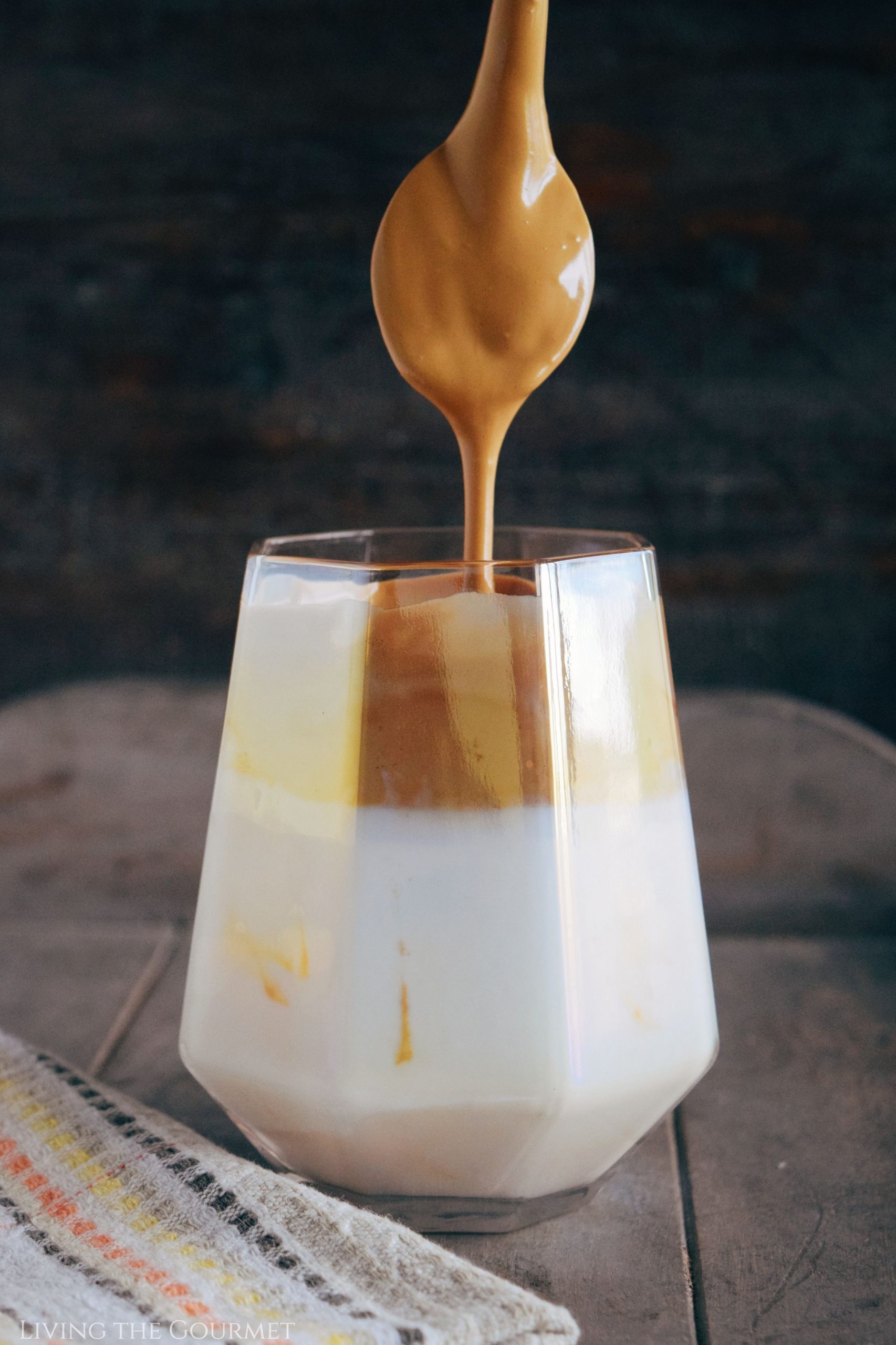
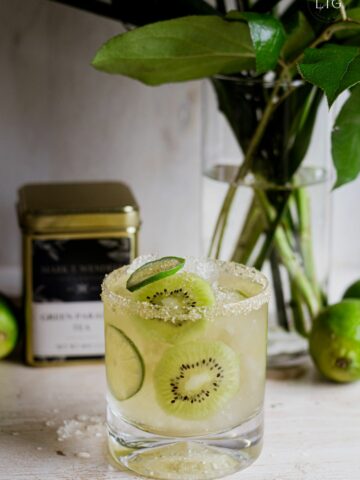
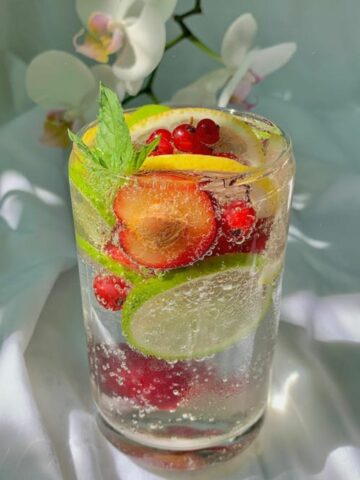
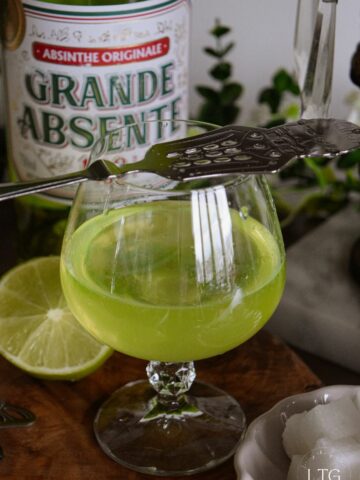

Melissa Cushing says
This is super interesting and I honestly would love to try this for myself. The recipe seems simple enough so that I can do it so I am for sure giving it a go Thank you for sharing and enjoyed the post 🙂 You are a great writer!
Catherine Pappas says
Dear Melissa,
Thank you for visiting and your kind words. I do hope that you enjoy this if you decide to give it a try.
xo
zing says
hi! i really love the style of cups. where could i buy them?
Living the Gourmet says
Hi there, the glasses are from Kohls- part of the Lauren Conrad Spring Collection! 🙂 Thanks for stopping by!
Laurence says
I've seen so many posts about this recipe lately. Your gorgeous pictures really make me wanna try it. I'll write down instant coffee on my grocery list. 🙂 (PS: I really like your octogonal glass.)
Catherine Pappas says
Dear Laurence,
Thank you for visiting. I keep instant coffee on my grocery list simply for convenience and it is used in so many recipes and honestly it isn't bad for a quick cup of coffee. Thank you for your compliment of the glass. My daughter surprised me with these glasses. They are pretty. Enjoy the day and stay safe.
Lasonia says
This looks so delicious! It would be the perfect after dinner treat.
Erika says
I'm all about trying new coffee drinks. I love that this can be made with any milk too.
Catherine Pappas says
Yes, thank goodness I happen to love coffee. This is quite different and is easy to make and enjoy. It is my sons new favorite! Enjoy the day and stay safe.
Annie @ Annie's Noms says
This looks perfect! I tried Dalgona Coffee for the first time a couple of weeks ago and I really liked it! I was seeing it everywhere, so I thought why not. I wasn't sure what to expect, but it's a fun twist on coffee and I'm very much enjoying cold coffee now the weather is nicer!
Catherine Pappas says
It is a nice coffee for the warmer weather coming. It really has not arrived here yet but it certainly is good for the warmer weather. It really is quite easy to make too. Enjoy and stay safe.
Gloria says
Well doesn't this look delicious? With making drinks at home, I think we will ALL realize we don't need the coffee shops. We can do this at home....and save so much money.
Catherine Pappas says
Oh, it is not difficult to make and certainly is affordable compared to the coffee shop pricey coffees. It is good for the nice weather coming. Enjoy and be safe.
Jen says
I love that you shared the history of this. I was wondering why I was seeing it everywhere!
Catherine Pappas says
Glad you enjoyed the history behind this and thank you for visiting. It is tasty and good for the warm weather coming. Enjoy and stay safe.
Angela says
This is such a fun way to enjoy coffee. So tasty and easy too!
Catherine Pappas says
It is not difficult to make and is tasty! Hope you enjoy it if you give it a try. Stay safe.
Cynthia says
My 19 year old is OBSESSED with this coffee! She makes it everyday!
Catherine Pappas says
My son is obsessed with this coffee too!! He loves it!! It is a nice treat in the warmer weather and soooooo much more affordable than going to a shop for one!! Enjoy and be safe.
Alison says
This Dalgona coffee is the latest coffee sensation! Who knew it was so easy and delicious to make! Thanks for the recipe!
Catherine Pappas says
It is easy and tasty and affordable compared to getting one at a coffee shop. I hope you enjoy it if you give it a try. Stay safe. xo
Chandice Probst says
After seeing this all over the web and social media I finally found a great version, thank you so much!
Catherine Pappas says
I do hope you enjoy this if you give it a try. It really is quite good and great for the warmer weather. Enjoy and be well.
Colleen says
I have yet to try this trendy drink, but your most makes me want to buy some instant coffee and do it. Thanks for explaining what makes it work!
Catherine Pappas says
I hope that you enjoy it the way my family has. xo
gloria Roa Baker says
lo9ve this !!! I love coffe desserts!!! take care you all!
Catherine Pappas says
I love coffee too Gloria, this really is tasty and is quite a treat. xo Stay safe and be well.
Chef Dennis says
I've been seeing this Dalgona Coffee recipe online! Never thought that it give such a huge impact for the people who see this. Now I am really excited and very curious to what the outcome will be. I can't wait to try making this.
Catherine Pappas says
I hope that you enjoy it if you give it a try. It is pretty easy to put together too. My son has really be enjoying it. Have a good day and be safe.
Aleta says
Whoa, I have also never heard of this and am completely intrigued! I love coffee in all shapes and sizes, and this version looks fun to make!
Catherine Pappas says
It is easy and quite tasty! I hope you enjoy it I know that my son and daughter are!! Have a good day and be safe.
Sharon says
Dalgona coffee is not my favorite afternoon obsession. I great pick me up that's a special treat too.
Alice | SkinnySpatula says
I have seen so many posts of Dalgona coffee these days but I have yet to try it. Your recipe is very well explained and I so, so love the glasses!
Alena says
Oh this recipe is so fun and I can’t wait to make whipped coffee myself! I just have to remember to get instant coffee next time I go grocery shopping...
Sara says
I have yet to try this coffee craze, but only because I don't have any instant coffee! I want to now though after seeing your photos and reading your post! Thank you for the background on it, and the science of it. It's such a fascinating trend, and I'm excited to come back to this recipe when I finally get to try it!
Jo says
Absolutely love dalgona coffee. Been drinking atleast 4 times in a week for past 1 month.
Ria says
This looks great and I love how in depth you went about it! I'd like to try it but honestly I'm too lazy to move beyond my nespresso machine lmao.